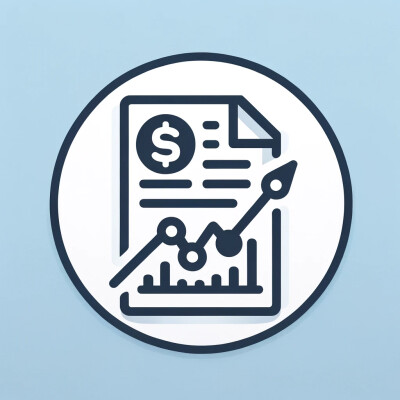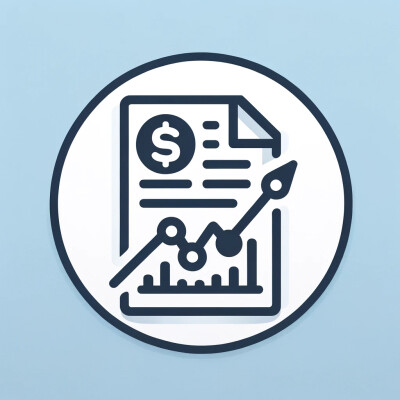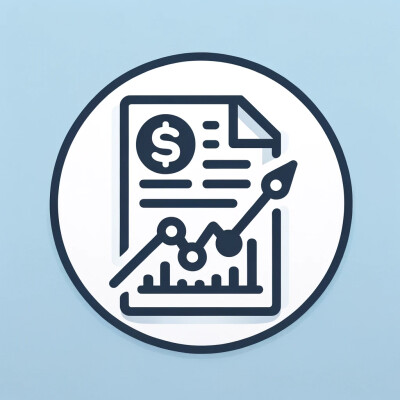- Speaker #0
Hello, welcome back to Papers with Backtest podcast. Today we dive into another Algo Trading research paper, and this one tackles a classic market timing strategy. You ready to unpack the sell in May and go away idea?
- Speaker #1
Always up for a good market timing debate, though I have to say this paper doesn't just take the selling May concept at face value, it gets a bit more sophisticated, combining it with the CPE ratio, that metric popularized by Robert Shiller.
- Speaker #0
Ah yes, the cyclically adjusted price earnings ratio. Our listener is likely familiar with that one. It's all about spotting potential overvaluation or undervaluation in the market. But what's really intriguing is how this paper uses KP as a filter for the sell in May, or as it's sometimes called the Halloween indicator strategy.
- Speaker #1
Right. And that's where the trading rules get interesting because it's not a simple in or out decision. Let's let's break it down.
- Speaker #0
OK, so we've got this idea that markets might perform better in the winter months, November through April versus the summer months. May through October. That's the basic premise of sell in May.
- Speaker #1
The paper's authors took that concept and layered on the CP ratio. They looked at a rolling 36-month median KP. If the KP in September was above that median, they considered it a high KP environment. If it was below, a low KP environment. And that's how they determined whether to apply the sell in May rule.
- Speaker #0
So in a low CAPE September, the rule was basically buy and hold for the entire year, November to October. But in a high-cape September, things get tactical. You hold stocks only from November to April, enjoying that potential winter effect, then sell in May and sit out the summer months.
- Speaker #1
Precisely. The tape E becomes the trigger for when to actually implement the sell in May tactic. Now, you're probably wondering, did it actually work?
- Speaker #0
Right. Let's get to those backtest results. This is what our algo trading listeners are here for. Did this combo strategy beat the market?
- Speaker #1
Well, the overall results from 1927 to 2016 were a bit underwhelming. The average annual return wasn't statistically different from just buying and holding the market. But hold on, there's a twist here.
- Speaker #0
I'm sensing those nuances you always find so fascinating. Tell me more.
- Speaker #1
It's all about the type of returns they looked at. They analyzed both CRSP equal-weighted returns, so think smaller companies, and CRSP value-weighted returns, dominated by the larger companies. And guess what? The equal-weighted returns using this strategy performed significantly better than value-weighted.
- Speaker #0
Hmm, that's a bit unexpected. You'd think, large established companies would be less affected by seasonal trends. What could explain this?
- Speaker #1
Perhaps this strategy with the CPE filter captures some unique behavior of smaller stocks, especially in high CP environments. It's like a clue pointing us towards further investigation.
- Speaker #0
I like that, a clue. So what's the next step in our investigation? Where did the researchers take us from here?
- Speaker #1
They did something very smart recognizing that markets change over time. They broke their data into two sub-periods, 1927 to 1971, and 1972 to 2016. This is where it gets really intriguing, particularly for those equal weighted returns.
- Speaker #0
Oh, I bet this is where we uncover some surprising results. Let's dive into those sub periods. All right. So we've got these two sub periods, 1927 to 1971 and 1972 to 2016. What did those reveal about the Capi Halloween strategy, particularly for those smaller cap stocks reflected in the equal weighted returns?
- Speaker #1
Well, buckle up, because this is where the strategies affect effectiveness seems to take a turn. In that earlier period, 1927 to 1971, the equal weighted returns using the Kepi Halloween approach actually outperformed the markets significantly. But in the later period, 1972 to 2016, the difference wasn't statistically significant. It's almost as if the strategy lost its edge in more recent times.
- Speaker #0
That raises a lot of questions. Is this a sign that markets have become more efficient or could there be other factors at play? I'm also curious about how those returns actually broke down within those high. KP periods. Didn't they analyze the winter and summer returns separately?
- Speaker #1
They did. And that's where we uncover the most intriguing, almost counterintuitive finding of this whole paper. Within those high KP periods, the average winter returns, November to April, were positive. Not groundbreaking, but still interesting considering we're talking about times when the market, based on KP, was arguably overvalued. But the real shocker is what happened in the summer months.
- Speaker #0
Oh, I'm on the edge of my seat here. Give it to me.
- Speaker #1
Following those high KP months, the average summer returns were consistently negative. It challenges the traditional thinking that an overvalued market will simply correct across the board. This suggests that those corrections might be more concentrated, happening primarily in those summer months, especially after a period of market exuberance.
- Speaker #0
Hold on, let me play devil's advocate for a second. What about those major market crashes we've seen? Wouldn't those outliers skew the summer returns and make them appear worse than they really are?
- Speaker #1
I'm glad you brought that up because the researchers anticipated that very question. They knew that extreme events like the 29 crash or the 2008 crisis could disproportionately influence their data. So they reran their analysis, this time removing the five worst performing years.
- Speaker #0
Clever. So they basically stress tested the strategy, taking out the most extreme market scenarios. What happened? Did the summer slump following high NJP months still hold up?
- Speaker #1
Yes, it did. Even without those five worst years, the negative summer returns remain statistically significant. So it's not just a few major crashes driving the results. There seems to be a broader pattern at play here.
- Speaker #0
So where does this leave us, especially for our listeners who are keen on putting this research into practice? Should they be scheduling a reminder to sell in May? each year.
- Speaker #1
Well, if this deep dive has taught us anything, it's that investing rarely has simple yes or no answers. This paper provides some compelling evidence that the sell in May idea might actually have some merit when combined with the KP ratio. However, it also highlights the complexities of the market where strategies that work in one period might not always translate to another.
- Speaker #0
Right. It's not a foolproof, set it and forget it system. You've got to stay adaptable.
- Speaker #1
And speaking of adaptability, weren't there some alternative explanations offered in the paper? Didn't they touch on the idea of an optimism cycle?
- Speaker #0
Yes. And that's where this research gets really interesting, bridging the gap between quantitative analysis and behavioral finance. They suggest that investor psychology might play a role in these patterns.
- Speaker #1
Intriguing. Are we saying that investor emotions could be driving these seasonal patterns in the market? Intriguing. Are we saying that investor emotions could be driving these seasonal patterns in the market? It's certainly a fascinating possibility. The researchers, they suggest that investors might be more optimistic at the start of a new year, perhaps carrying over from the holiday season and that optimism fuels those winter rallies. But as the year goes on, you know, reality sets in. Maybe those earnings reports don't live up to the hype and the optimism fades leading to those weaker summer returns.
- Speaker #0
So we're talking about a potential self-fulfilling prophecy here. If investors believe the sell-in may effect is real. their actions could actually make it come true.
- Speaker #1
And that's what makes markets so complex and intriguing. They're not just driven by cold hard data, but also by human psychology, you know, by expectations and sentiment. This paper highlights that interception beautifully.
- Speaker #0
It also leaves us with a lot to think about, especially when it comes to applying this knowledge. If we accept that these seasonal patterns might be influenced by investor behavior, how can we incorporate that into our trading strategies?
- Speaker #1
That's the million dollar question. It's not just about blindly following a calendar-based rule. We need to consider the broader context, the market sentiment, the underlying fundamentals. And this is where I think this paper leaves us with a truly provocative thought.
- Speaker #0
I'm all ears. Weigh it on me.
- Speaker #1
The researchers focused on the overall stock market, but they didn't explore sector-specific applications. What if this Cape Halloween strategy is even more effective in certain industries? Maybe there are sectors that are particularly sensitive to these optimism cycles or where the mispricing effect is more pronounced.
- Speaker #0
That's a brilliant point. It's like they've handed us a treasure map and now it's up to us to go digging for gold. Imagine the possibilities if we could identify those sectors that are most prone to this sell in May effect.
- Speaker #1
And that's the beauty of research like this. It sparks new ideas and challenges conventional thinking and it pushes us to go further, to explore new avenues.
- Speaker #0
While I can't wait to start backtesting this strategy across different sectors, who knows what we might find. Thank you for joining us on this deep dive into the sell-in-May phenomenon. Or should I say the sell-in-May, but maybe not always. Especially if you're factoring in, say, P and paying attention to sector rotations phenomenon.
- Speaker #1
Right. It's a mouthful, but that's what makes this stuff so interesting.
- Speaker #0
Thank you for tuning in to Papers with Backtest podcast. We hope today's episode gave you useful insights. Join us next time as we break down more research. And for more papers and backtests, find us at https.paperswithbacktest.com. Happy trading.





